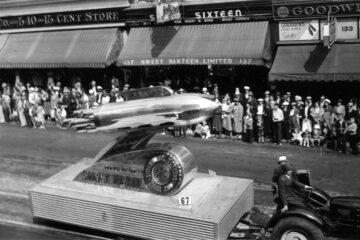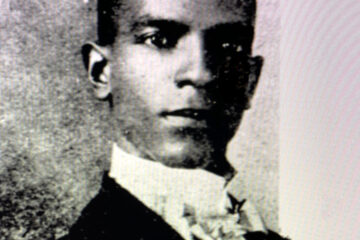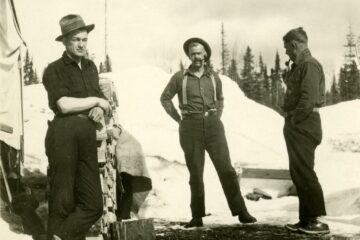Frances Foxcroft
Frances ‘Frank’ Foxcroft
She stood firm and blocked the way
by Donna Sacuta
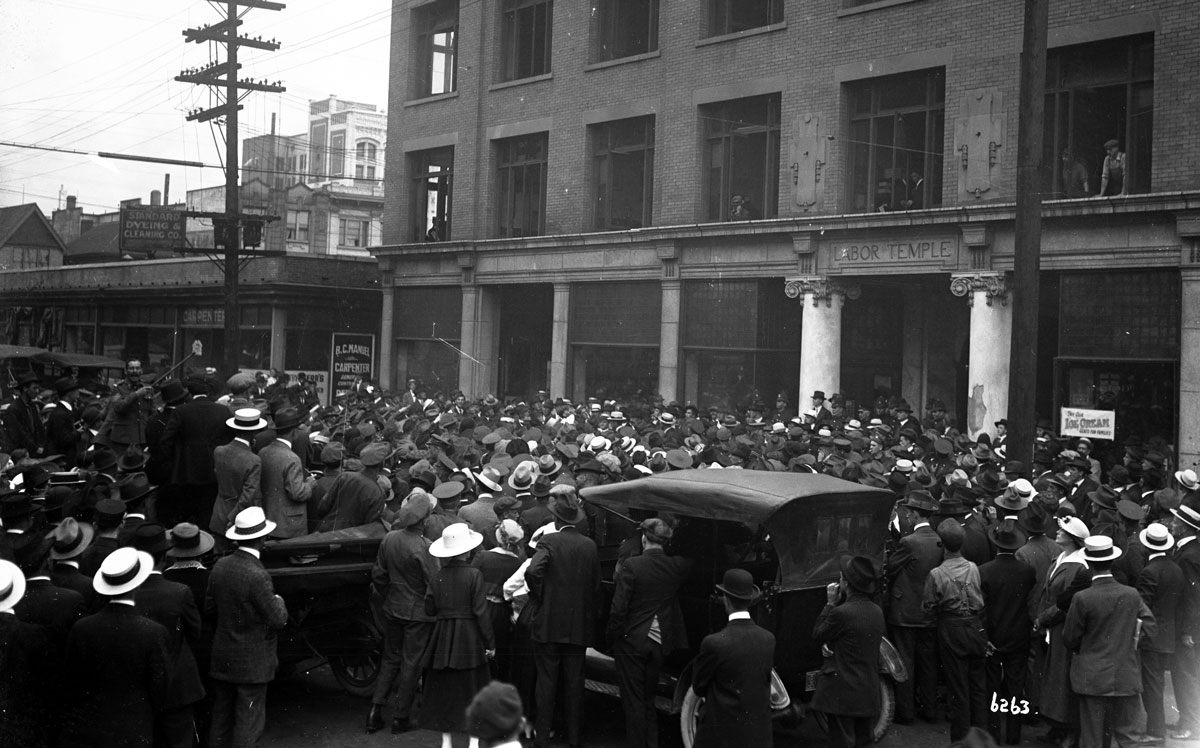
A hysterical mob of ex-soldiers stormed Vancouver’s Labour Temple on August 2, 1918 demanding an end to the one-day general strike called to protest the shooting of Ginger Goodwin. Frances Foxcroft stood in their way. Vancouver Public Library | 18264
Frances ‘Frank'1 Foxcroft likely saved the life of Vancouver Trades and Labour Council Secretary Victor Midgely on the afternoon of August 2, 1918. A rampaging mob of angry ex-soldiers descended on the Labour Temple on Dunsmuir Street during the one-day general strike called to protest the shooting of coal miner Ginger Goodwin on Vancouver Island.
The throng — said to number 300 — called the strike “seditious”, “unpatriotic” and the organizers “pro-German.” Some proposed stringing Victor Midgely up on a pole. Others offered to run the streetcars which had been shutdown by the strikers. When the mob entered the labour offices looking for Midgely and others, they were stopped in their tracks by Foxcroft, the stenographer and telephone exchange operator at the Labor Temple.
The mob planned to hurl Midgely through the second floor window but “Foxcroft…who was bruised considerably in the process, stood in front of the window and prevented this being done.” 2
“Again and again the soldiers demanded that she step aside and let them open the sash, but she stood firm and blocked the way,” wrote the Vancouver Sun.3
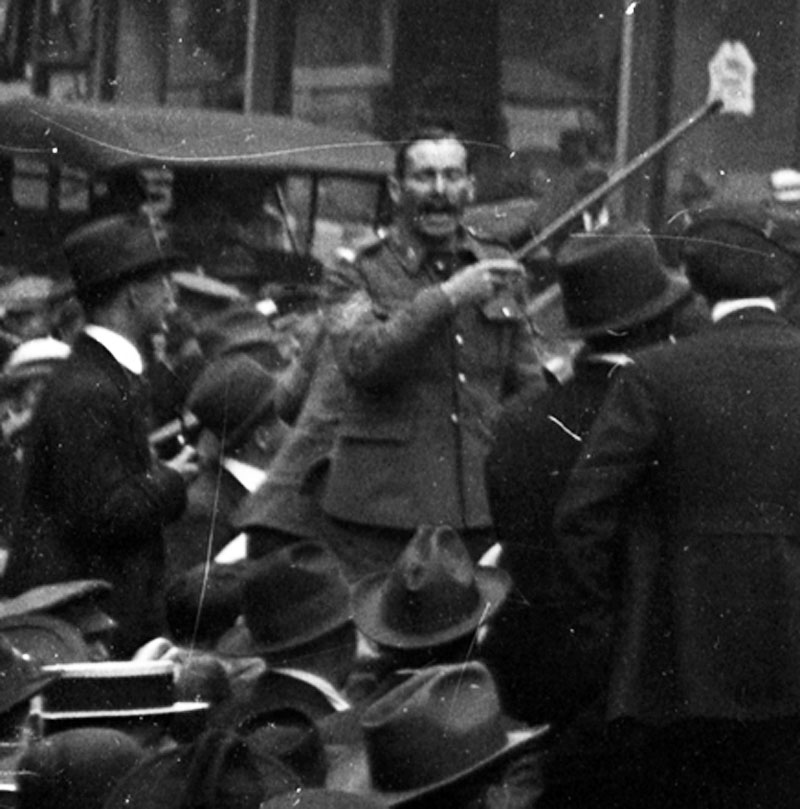
Incited by stories in the morning newspapers, a throng of ex-soldiers and others broke windows, vandalized the interior and threatened violence toward union officials. Frances Foxcroft, stenographer and telephone operator, stood in their way. Enlarged from Vancouver Public Library | 18264.
When the melee was over, so grateful were the union officers that “Miss Foxcroft, the popular telephone operator at the Temple, was presented with an amethyst and pearl pendant, as a token of appreciation for the manner in which she saved V.R. Midgley from being pushed out of the Temple window during the riots.”
“Miss Foxcroft, in expressing her thanks, stated that she would be willing to perform the same service for any of them under the same circumstances.”4
A labour activist and union organizer
Frances Foxcroft was not just a one-day heroine. She was a devoted trade unionist who has received little historical attention.
Foxcroft arrived in Halifax in 1912 at the age of 23 from Hesket-in-the-Forest, a small parish in the north of England to join her brother William in Vancouver. She soon began work at the Vancouver Labour Temple where she earned $900 a year, higher than the average weekly wage for women. Frances’ brother was also active in the labour movement; he chaired the Miners’ Liberation League in 1913 who agitated for release of 39 men imprisoned during the Vancouver Island coal strike.
Though William left Canada to spend the war years in Australia, Frances remained in Vancouver where she was a contemporary and friend of Helena Gutteridge, the union organizer who was the first woman elected to Vancouver City Council in 1937. Gutteridge too, was present during the storming of the Labour Temple, but unlike Foxcroft, did not rush to defend the others. Instead, she was quietly hiding $300 in union dues in her purse that she had just collected from laundry workers.
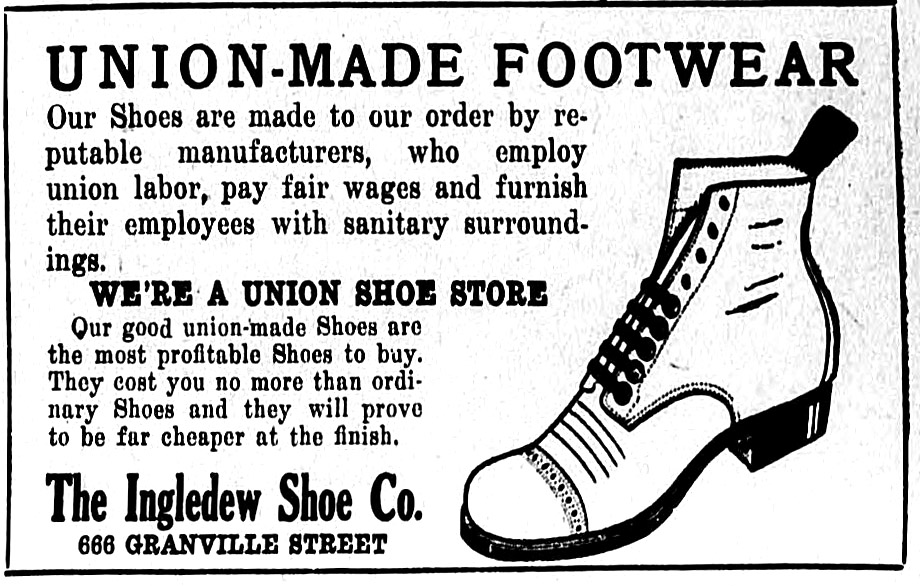
Frances Foxcroft and Helena Gutteridge were organizers in the Union Label League. “Our aims are better conditions, shorter hours, living wages and a higher standard of citizenship. Unionism stands for all of this, and the union label is the visible symbol of this worthy ambition.”
Both women were active members of the Union Label League made up of delegates from various trade unions who worked to increase public demand for union-made goods and services.5
Gutteridge and Foxcroft were also prominent in the 1917 campaign to register women voters in Vancouver for the wartime election where conscription was the key issue.

Officers and business agents presented ‘Miss Foxcroft’ with an amethyst and pearl pendant in appreciation of her brave actions. Edwardian era suffragist jewelry often featured purple, white and green gems.
Foxcroft was also a founding member of the Vancouver Telephone Operators’ Union – the “Hello Girls” — chartered by the International Brotherhood of Electrical Workers (IBEW) Local 213. She was a trustee for the union, and was elected as their delegate to the Vancouver Labour Council. The renowned Vancouver operators stayed out on strike longer than any other workers during B.C.’s sympathy action in support of the Winnipeg General Strike in 1919. Shortly afterwards, Foxcroft represented the union operators at the IBEW’s international convention in New Orleans..
In 1923, after 12 years in Vancouver, Foxcroft returned to England “to spend Christmas with her mother”. Her father passed away shortly after her return.
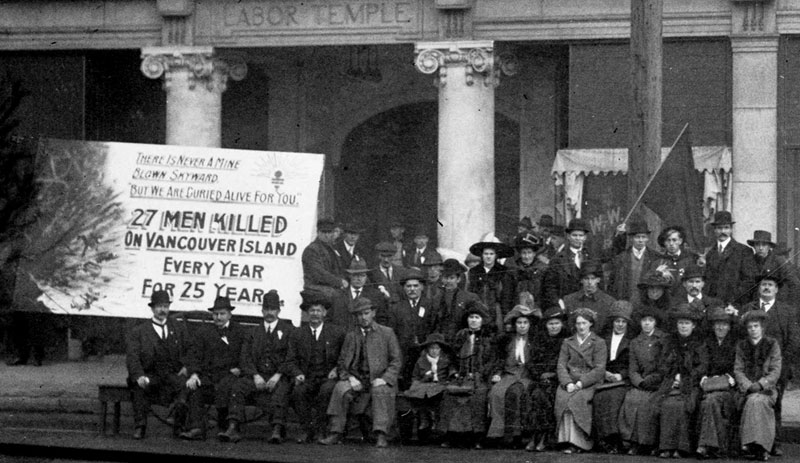
Frances Foxcroft’s brother William chaired the Miner’s Liberation League who posed for this photo in 1913 in front of the Labor Temple. The building remains standing today at 411 Dunsmuir Street, Vancouver. City of Vancouver Archives | CVA 259-1.
Genealogical research by Dr. George Davison
See also: Trouble on the Line: An historical look at female telephone operators in British Columbia and some of their early activism with specific reference to the first strike in the Canadian telephone industry.
